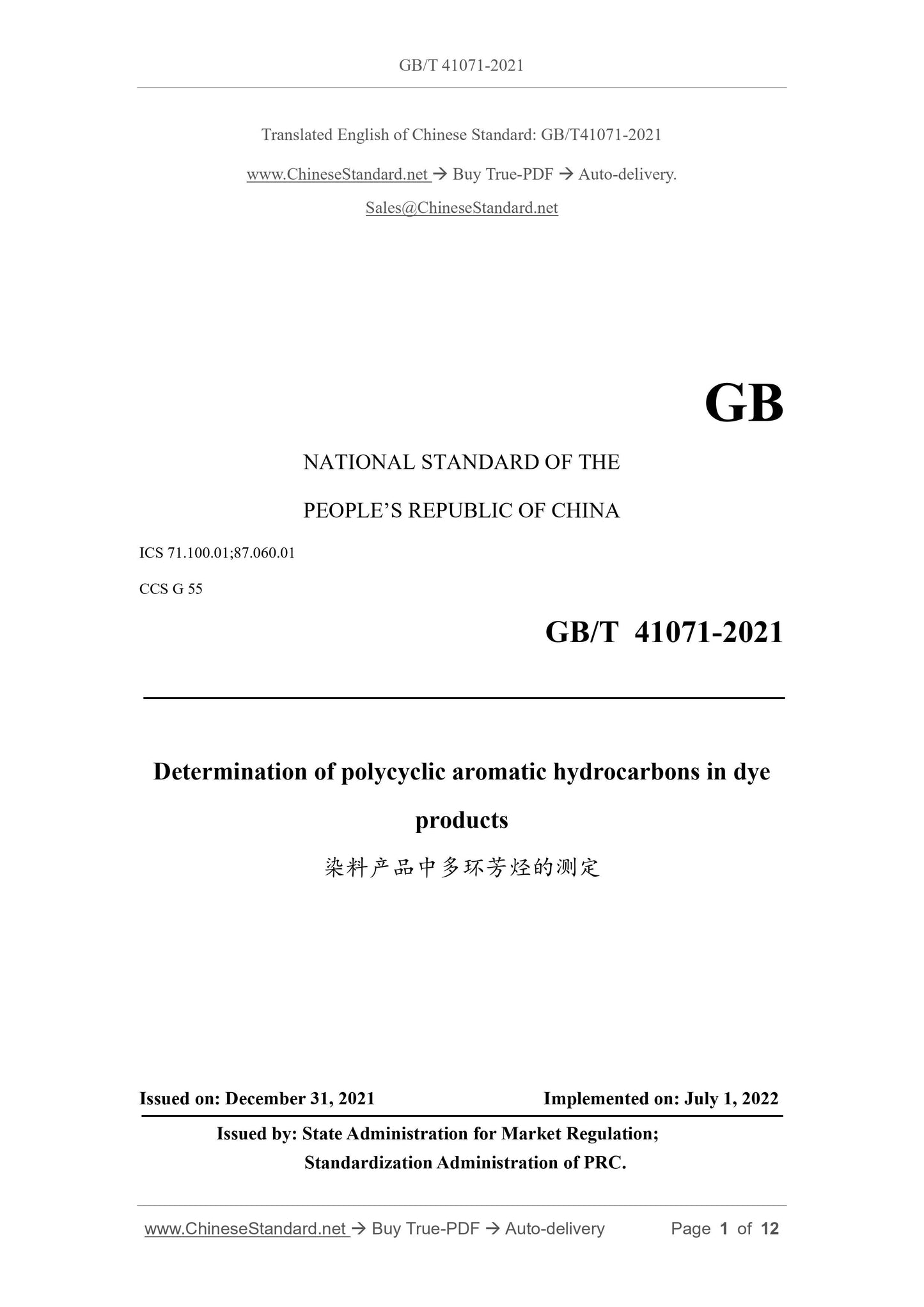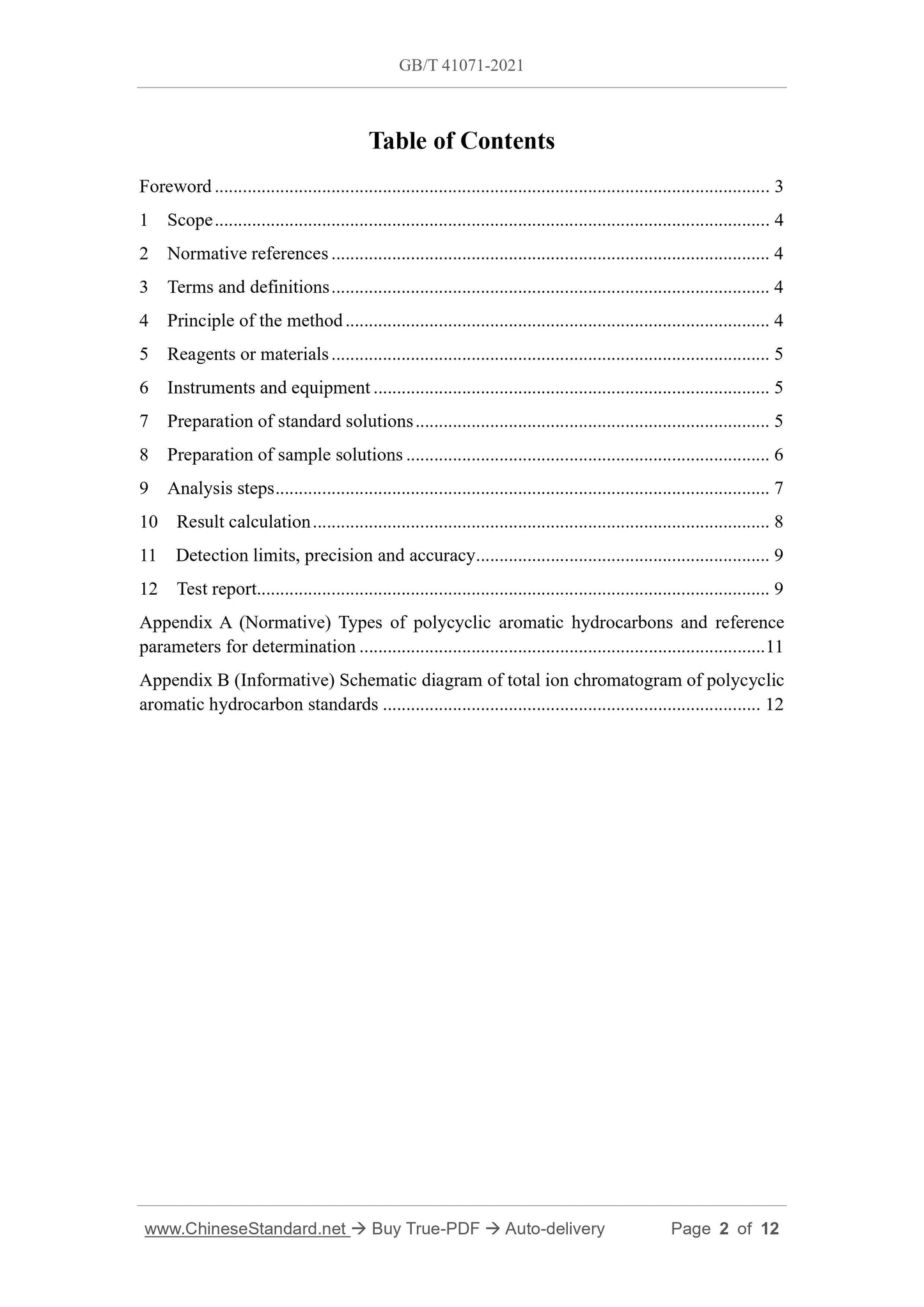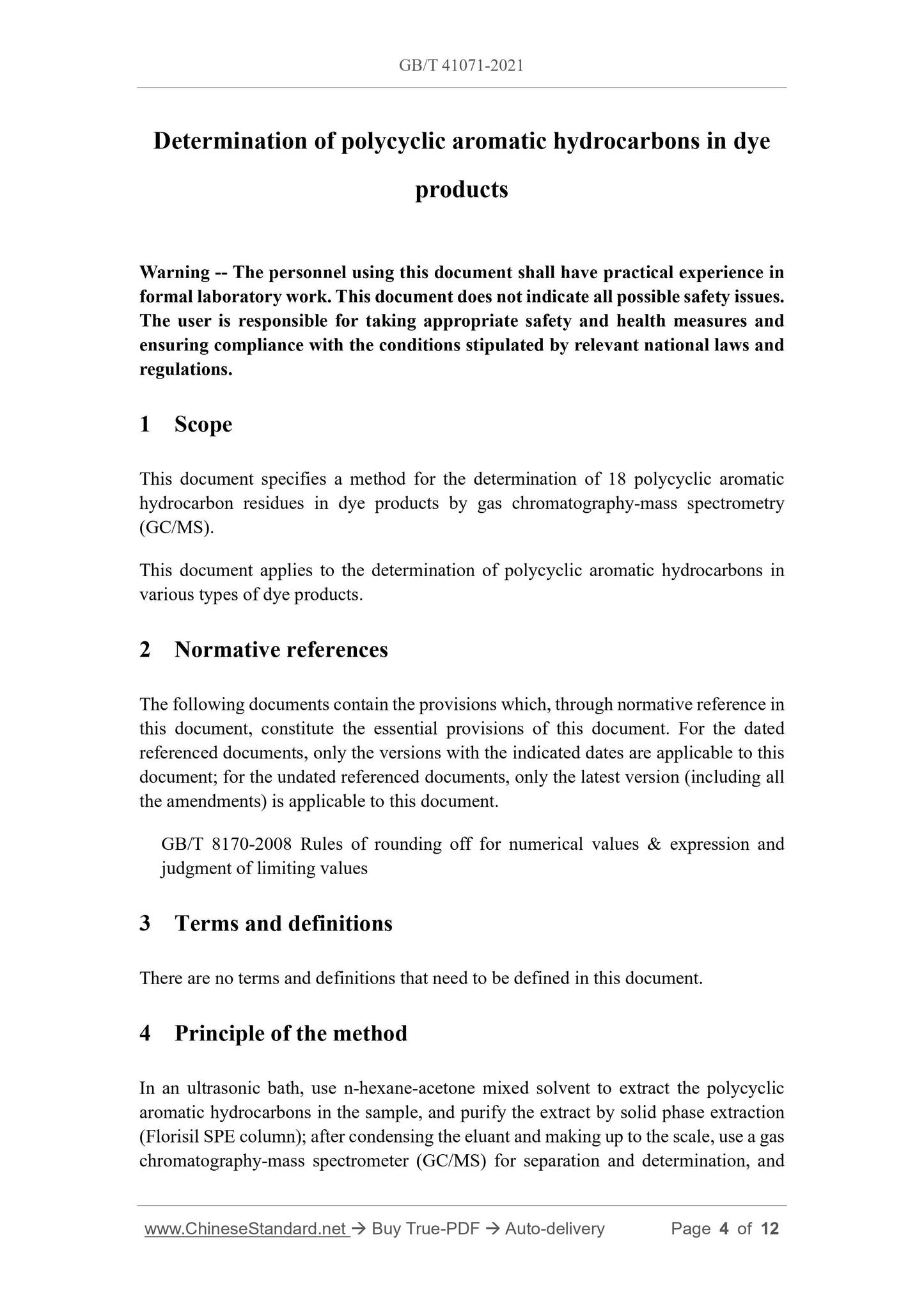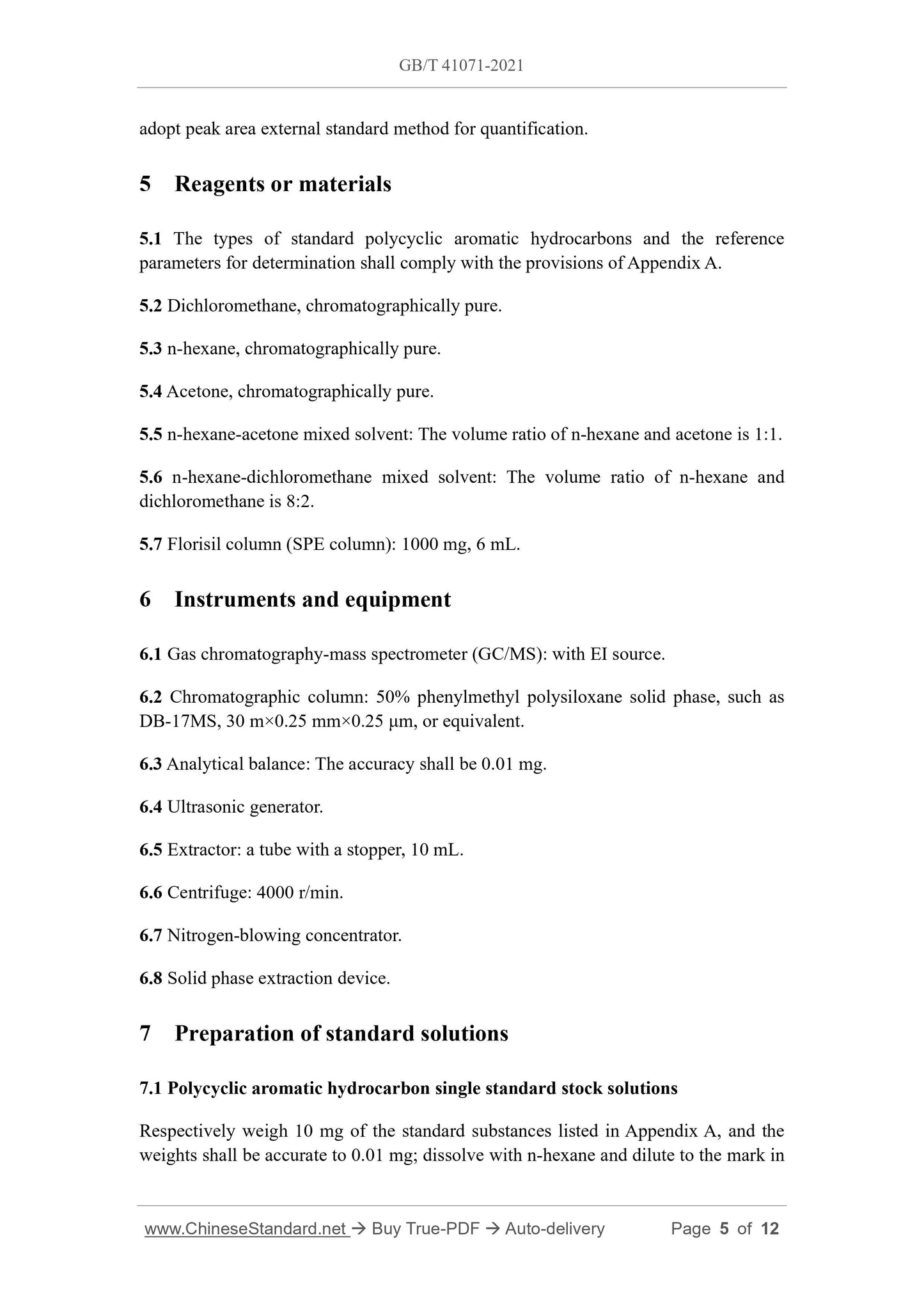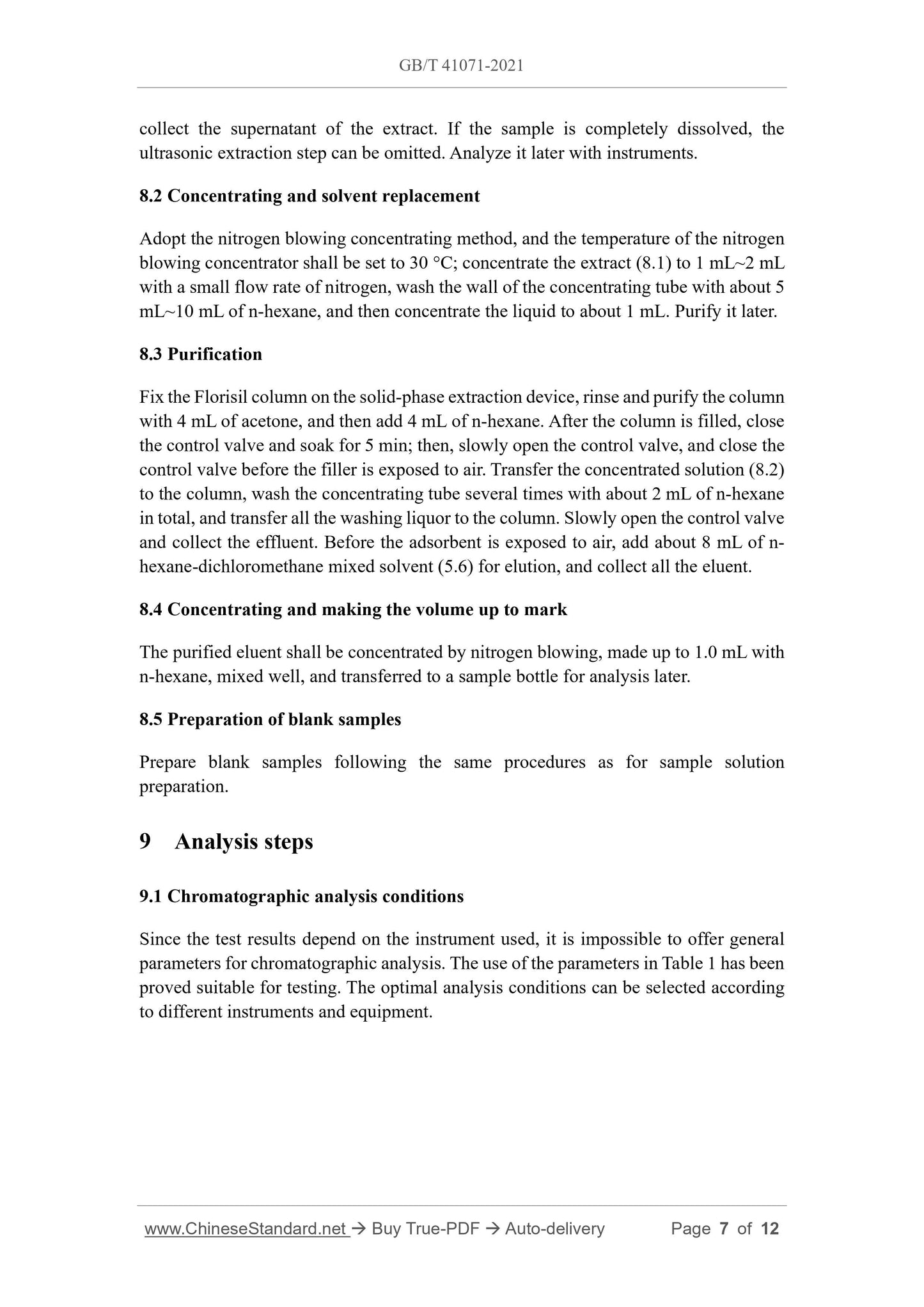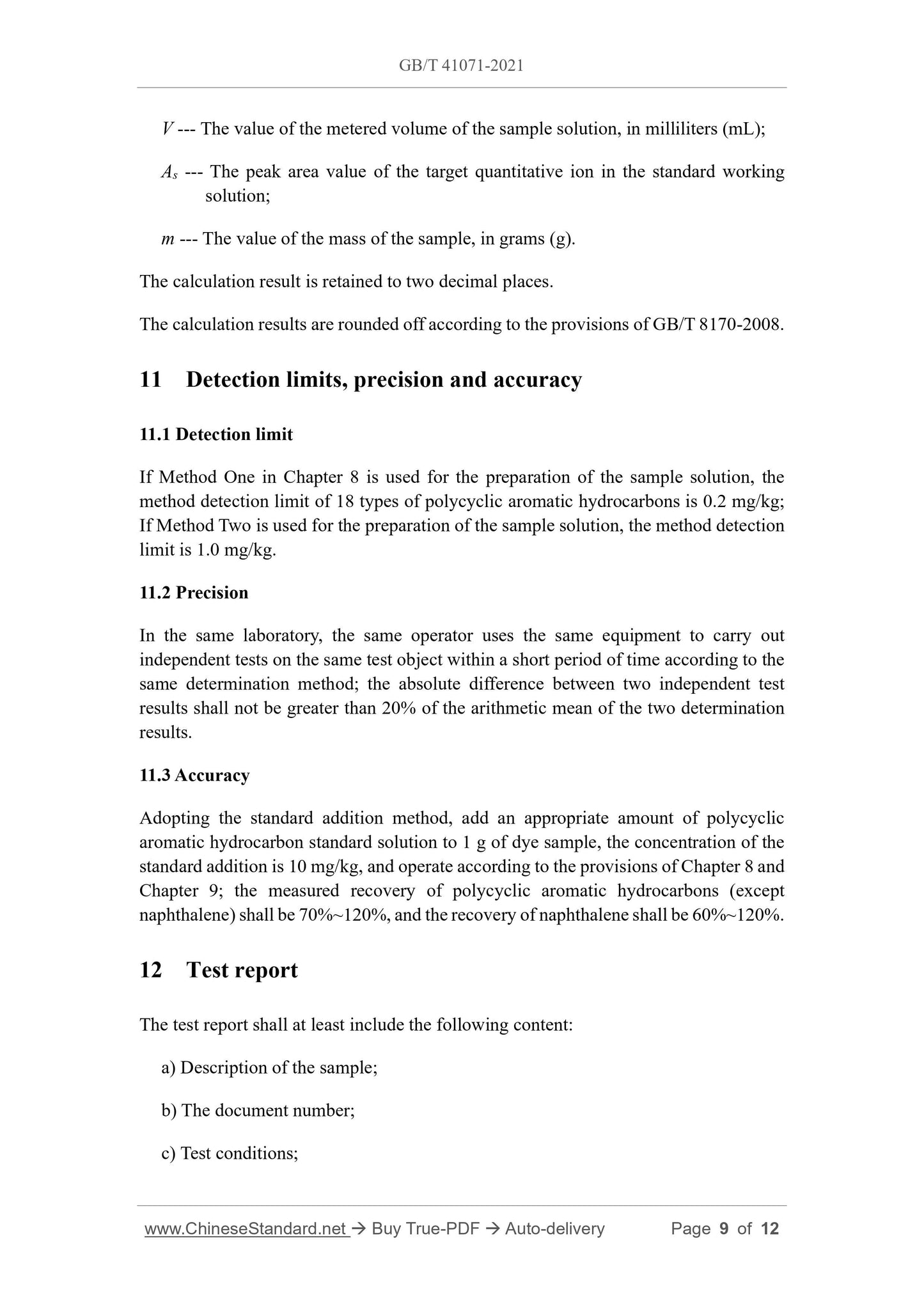1
/
of
6
www.ChineseStandard.us -- Field Test Asia Pte. Ltd.
GB/T 41071-2021 English PDF (GB/T41071-2021)
GB/T 41071-2021 English PDF (GB/T41071-2021)
Regular price
$170.00
Regular price
Sale price
$170.00
Unit price
/
per
Shipping calculated at checkout.
Couldn't load pickup availability
GB/T 41071-2021: Determination of polycyclic aromatic hydrocarbons in dye products
Delivery: 9 seconds. Download (and Email) true-PDF + Invoice.Get Quotation: Click GB/T 41071-2021 (Self-service in 1-minute)
Newer / historical versions: GB/T 41071-2021
Preview True-PDF
Scope
This document specifies a method for the determination of 18 polycyclic aromatichydrocarbon residues in dye products by gas chromatography-mass spectrometry
(GC/MS).
This document applies to the determination of polycyclic aromatic hydrocarbons in
various types of dye products.
Basic Data
| Standard ID | GB/T 41071-2021 (GB/T41071-2021) |
| Description (Translated English) | Determination of polycyclic aromatic hydrocarbons in dye products |
| Sector / Industry | National Standard (Recommended) |
| Classification of Chinese Standard | G55 |
| Word Count Estimation | 8,827 |
| Issuing agency(ies) | State Administration for Market Regulation, China National Standardization Administration |
Share
